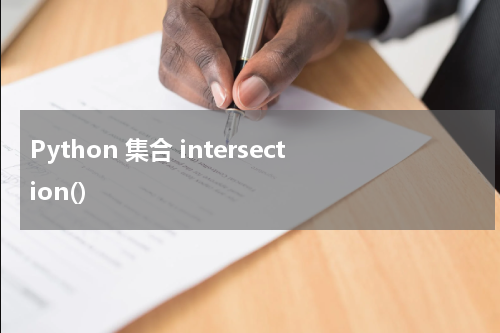
intersection()方法将返回一个新集合,其中包含所有集合相同的元素。
两个或更多集合的交集是所有集合相同的元素集合。例如:
A = {1, 2, 3, 4}
B = {2, 3, 4, 9}
C = {2, 4, 9 10}
那么,
A∩B = B∩A ={2, 3, 4}
A∩C = C∩A ={2, 4}
B∩C = C∩B ={2, 4, 9}
A∩B∩C = {2, 4}
Python中intersection()的语法为:
A.intersection(*other_sets)
intersection()参数
intersection()允许任意数量的参数(集合)。
注意: *不是语法的一部分。用于指示该方法允许任意数量的参数。
Intersection()返回值
intersection()方法返回集合A与所有集合的交集(作为参数传递)。
如果未将参数传递给intersection(),则它将返回集合(A)的浅拷贝。
示例1:如何intersection()工作?
A = {2, 3, 5, 4}
B = {2, 5, 100}
C = {2, 3, 8, 9, 10}
print(B.intersection(A))
print(B.intersection(C))
print(A.intersection(C))
print(C.intersection(A, B))运行该程序时,输出为:
{2, 5}
{2}
{2, 3}
{2}更多实例
A = {100, 7, 8}
B = {200, 4, 5}
C = {300, 2, 3}
D = {100, 200, 300}
print(A.intersection(D))
print(B.intersection(D))
print(C.intersection(D))
print(A.intersection(B, C, D))运行该程序时,输出为:
{100}
{200}
{300}
set()您还可以使用&运算符找到集合的交集
示例3:使用&运算符设置相交集
A = {100, 7, 8}
B = {200, 4, 5}
C = {300, 2, 3, 7}
D = {100, 200, 300}
print(A & C)
print(A & D)
print(A & C & D)
print(A & B & C & D)运行该程序时,输出为:
{7}
{100}
set()
set()
